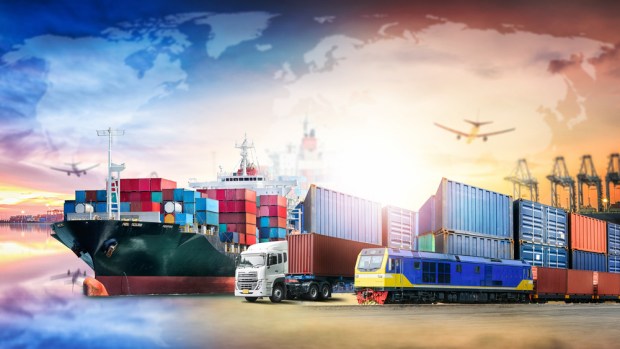Deep Dive: Rethinking Global Supply Chains

Supply chain industry leaders are thus turning to a wide array of technologies to improve efficiencies, provide greater transparency and prepare for the influx of online customers and heightened demand for efficient deliveries. The Global Payments Architecture Report includes a Deep Dive examining how such solutions are shaping global supply chains’ futures.
The global transportation network that supports the movement of goods from suppliers to buyers is undergoing a radical transformation. Industry players are increasingly turning to new tools for better data and analytical insights, enabling them to address transportation issues in real time.
These changes ensure that various global supply chain participants — suppliers, manufacturers and logistics providers — are working together. After all, a strong transportation network must be in place to keep things running smoothly, particularly if consumers and businesses want to receive their purchases on time and in the condition they were promised.
The global supply chain’s transportation component has seen significant evolution in the past few decades. Once primarily dominated by freight drivers and couriers, the market now includes third-party logistics providers (3PLs) who handle tasks such as order processing and information management. A more recent addition to the market includes fourth-party logistics providers (4PLs) — entities that can be contracted by firms to oversee third-party activities, meaning they can outsource the supply chain management process entirely.
Strains on the global supply chain are building as more customers choose to conduct commerce online. The U.S. eCommerce market alone is expected to surpass $506 billion this year by some accounts, and could exceed $712 billion by 2022.
Supply chain industry leaders are thus turning to a wide array of technologies to improve efficiencies, provide greater transparency and prepare for the influx of online customers and heightened demand for efficient deliveries. The following Deep Dive examines how such solutions are shaping global supply chains’ futures.
Digital Payment Solutions
Ensuring a supply chain continues to operate smoothly requires being certain that all involved parties are paid promptly, and digital payment solutions are proving invaluable.
These solutions — which include application program interfaces (APIs), digital invoicing and subscription services, among other options — can improve commerce by quickly delivering payments to sellers and suppliers. This ensures suppliers are paid for their services, strengthens their financial liquidity, helps automate payments and streamlines payment processing, sparing companies the hassle of having to track down invoices.
Supply chain-focused financial tools are already having a strong impact on the B2B payments market. The Association for Financial Professionals (AFP) reported in May that 81 percent of B2B organizations were paid by check in 2004, a figure that had declined to 51 percent by 2016.
A Stronger Transportation Infrastructure
Global supply chain managers’ top priorities include establishing a strong transportation network and reducing costs. Neither represents an easy task, to be sure, especially since transportation-related expenses can account for 65 percent of a supply chain’s budget, according to some reports.
A growing number of companies are relying on a diverse set of transportation solutions to offset potential disruptions and associated losses. A recent survey of supply chain management professionals by freight provider CSX found that 53 percent of respondents are using multiple modes of transportation — railways, freight, air and maritime methods — to avoid supply chain disruption.
Using two or more transportation modes in shipping, called “intermodal shipping,” is popular among companies, the survey noted, and for good reason. According to CSX, firms that switch to intermodal shipping save roughly 15 percent on transportation costs.
The Rise of Supply Chain 4.0
The availability of data insights, heightened transparency, connected technologies and robotic, automated data solutions is also helping supply chain companies further improve efficiencies. Integrating these connected systems and data analytics services into supply chain operations is referred to as “Supply Chain 4.0.”
Recent analysis indicates that Supply Chain 4.0 could have a wide-ranging impact on the market. Its innovations have the potential to reduce operational expenses by roughly 30 percent in the next one to two years, while also decreasing lost sales and inventories by 75 percent. These developments are expected to help supply companies improve their customer interactions, offering easier access to insights and using real-time data to improve quality of services.
Future developments may also see drones and autonomous vehicles used to facilitate deliveries, and warehouses are embracing related technologies that can locate goods and usher them along faster. These systems can communicate their activities in real time, too, providing updated information on supply chain status and enabling others in the process to anticipate goods’ deliveries or potential delays.
The supply chain is no longer simply a method of shipping items from one party to another. It has evolved into an information-rich system with insights and intelligence helping to advance its evolution. A stronger supply chain that can quickly process payments or information and respond to unexpected developments will be needed to ensure consumers’ expectations are met — and that the gears of its machinery continue to turn unencumbered.
